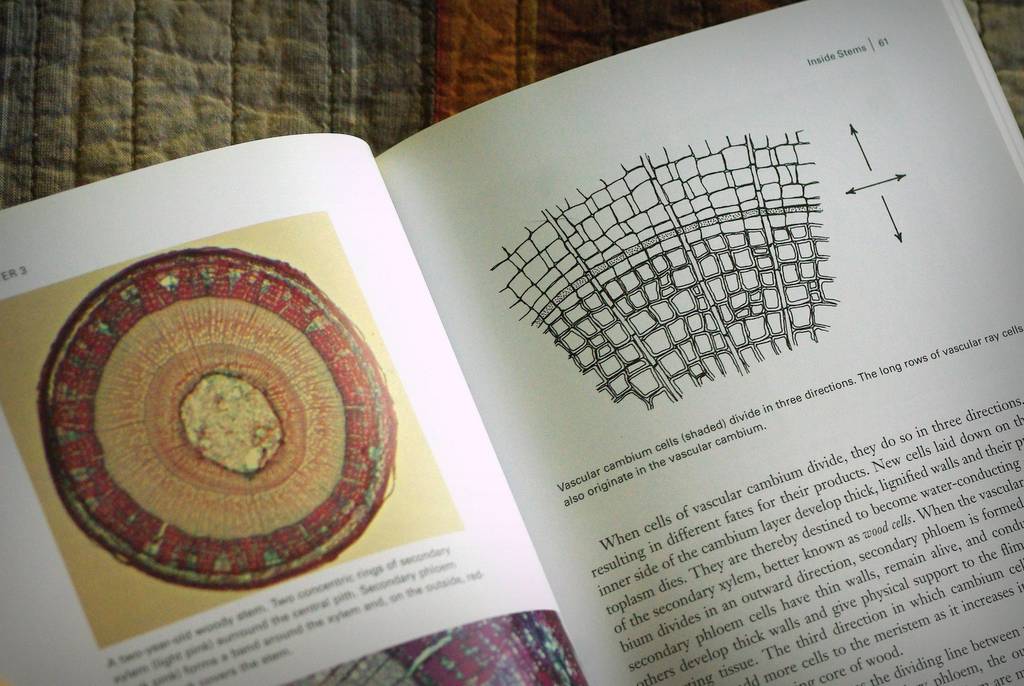The book is Botany for Gardeners by Brian Capon. I've had the revised edition for a few years now, and I consider this a must-have book for my gardening bookshelf. (Note that the third edition is currently available.)
First things first: this is not a book most gardeners would read for pleasure. When I first got it I sat down with the intention of reading through it. At least three years later, I'm still not finished. Not that it's an overly difficult read, but it's just not that type of book, at least for me. (Unless you enjoy reading textbooks of course.)
Botany, if you didn't know, is "the scientific study of plants, including their physiology, structure, genetics, ecology, distribution, classification, and economic importance." This book gets into all of that -- some parts more than others -- but does so in an understandable way. For those of us who may not have degrees in Biology, Horticulture, Plant Sciences, etc. this is a great way to understand plants on a deeper level.
There's so much to understand too! Let's take an example. A casual gardener might ask "What's one way that plants adapt to inadequate light?". The answer is "They bend so their leaf surfaces are as perpendicular to the light source as possible." A more inquisitive gardener might as "But how do they do this?". The answer would be "The cells on the shady sides of stems elongate, bending the plant toward the light." An even more inquisitive gardener might persist: "But how do they elongate?". The answer is in this book (and has to do, as many plant "behaviors" do, with a hormone).
Similarly, you'll learn about plant respiration, genetics, the roles of specific nutrients, geotropism (I learned that term from this book), reproduction, root growth, and so much more. For instance, take a look at the caption to this illustration about clay particles:
The accompanying text expounds upon this a bit, but it explains why plants can't use much of the water present in clay soils. Really interesting stuff!
There are plenty of illustrations, but also many photographs too, which helps keep things visually interesting -- at least for me.
In summary, if you've ever wondered why plants do what they do (why does pruning cause more branches to grow?) and aren't intimidated by a little bit of science, this book is for you. It probably contains much more information than you'll need though, and you may never actually get through all of it, but it's much more digestible than a full-on Botany textbook. You'll love what you learn about plants.
My four book review questions:
Am I glad to have it on my bookshelf? Yes!
Would I be disappointed if I misplaced it it? Yes.
Will I read it again? "Read" is not the right term. Will I refer to it again? Yes.
Would I give it as a gift? Yes, but only to gardeners with a serious desire to learn more.
If you missed them, here are my previous book reviews from this season:
The Garden Club of America
The Forest Unseen
The Roots of My Obsession
Missouri Wildflowers
Hardy Succulents
The Beginner's Guide to Growing Heirloom Vegetables
.







Oh man. I got this as a Christmas gift last year and have opened it up exactly once. I need 4 more hours in the day just to read.
ReplyDeletep.s. nice pairing of the photo of the root systems and the words "a great way to understand plants on a deeper level"
ReplyDeletedanger: Just open up to a random page every day and learn one new thing. Takes 5 minutes. Also, stop putting it back on the shelf every day. ;)
ReplyDeleteI'm with you on this book! I have an older edition, and indeed, even though I don't just sit down and read it, every time I return to it, I learn something new and wonderful. Really, it's essential before we head outside. This reminds me to peruse it again!
ReplyDelete